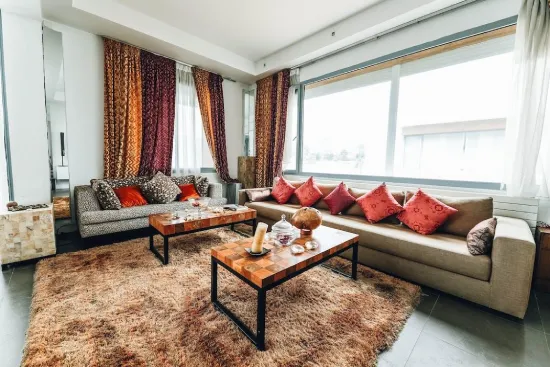What Does HVAC Stand For?
HVAC stands for Heating, Ventilation, and Air Conditioning.
What Does It Do?
An HVAC system is responsible for heating, cooling, and maintaining airflow in a building. HVAC usually refers to central air and heating systems. In NYC, central heating is quite common, but central cooling is not. One reason for this is the NYC heat law, which forces building owners to maintain indoor temperatures of 68 degrees when the temperature outside falls to 55 or lower. The law also makes building owners responsible for providing hot water.
There is no such law on air conditioning that forces building owners to provide a central cooling system, even though it can make a property more attractive to buyers. So whether you are buying or renting an apartment (co-op or condo) in NYC, there is a high chance that you will have to meet your air conditioning and cooling needs on your own.
However, some newer apartment buildings might be equipped with proper HVAC systems.
What Are The Most Popular Types of HVAC Systems In NYC?
There are two categories here:
1. Buildings With Central Heat But No Central Cooling
In most large NYC buildings (50,000 sq. ft. or larger), the heating system relies upon steam. Since there is no central HVAC system in these buildings that takes care of both heating and cooling, apartment owners/renters have to seek other air conditioning solutions. The most common ones are:
- Window Units are the most common type of ACs used in NYC. You need to confirm with your building owners to see if they are allowed and check if the building’s wiring and your power outlet can handle a window unit.
- Through-The-Wall Units are usually more efficient at cooling a room because, in order to install them, you will have to cut an opening in an exterior wall. The unit can then fit perfectly in that opening, and air won’t escape through all the gaps as it happens with a window unit. But your building owner might not give permission for a permanent modification in the building structure.
- Ductless Mini Split ACs are efficient and can be installed with minimal impact on the structure. They consist of two units, an outer unit (compressor) and an inner unit (the cooling unit). The two are connected through metal conduits that only require a small hole in the walls.
Apart from these, PTAC and portable ACs are also quite common. One thing common between these AC units is that renters and apartment owners can take these with them when they move to a different apartment.
2. Buildings With Central Heating And Cooling
When it comes to central heating and cooling, the two most common types of HVAC systems are ducted and ductless.
A Ducted system requires a network of ducts in the building. There are usually two types of ducts: supply and return. Supply ducts push the air that’s already been cooled (or heated) through the central HVAC system, and the return duct pulls the air from a room to run it back to the HVAC system. Ducts can reduce the available height of your apartment.
A Ductless split system relies upon outers and inners, where the cooling system (outer) is installed outside the building while the inner is responsible for circulating hot or cold air in your room. Multiple inners can be attached to one outer/compressor.
How Expensive Can HVAC Systems Be To Replace?
The cost of replacing an HVAC system depends upon a number of factors, including:
- The HVAC system (Brand, size, power, energy efficiency, etc.)
- If you are replacing both cooling or heating system or just one
- If you will also be replacing/removing the ducting
- The electricity connection to handle the new load
- The size of the building that needs to be heated and cooled
One estimate puts the average cost of replacing an HVAC system somewhere between $5,000 and $12,000. We can assume that it’s for a relatively small building. For small co-ops (comparable to a four-story townhouse), the lower-end estimate of installing an HVAC system is between $40,000 and $50,000, and the higher-end is $100,000.
If you are replacing an old HVAC system with a new one (like replacing a ducted system with a ductless split system), the cost of replacement might be similar to a new installation.












